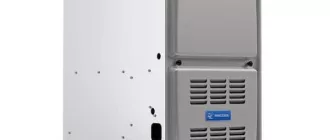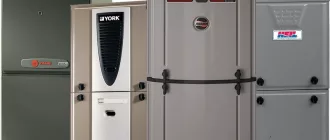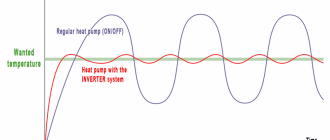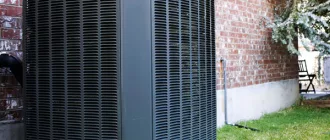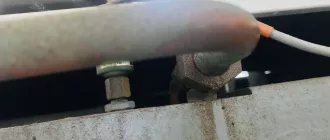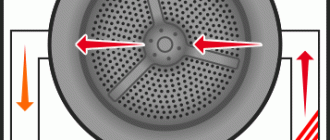The Ultimate Furnace Tune-Up Checklist
When it comes to your heating system, you want the ultimate service to ensure optimum efficiency. That’s why our furnace tune-up checklist covers everything you need to know. From inspection to maintenance, we’ve got you covered.
Inspection:
Our expert technicians will thoroughly inspect your furnace to identify any potential issues. We’ll check for leaks, test the thermostat, and examine the heat exchanger for any signs of damage. This step is crucial to ensure the safety and proper functioning of your system.
Maintenance:
Our comprehensive maintenance service includes cleaning the furnace, lubricating moving parts, and replacing air filters. We’ll also check and adjust the ignition and burner assembly to maximize efficiency. Our goal is to keep your furnace running smoothly and extend its lifespan.
Efficiency:
A well-maintained furnace operates at peak efficiency, which means lower energy bills for you. Our tune-up service will optimize your furnace’s performance, ensuring it uses less energy while providing consistent warmth. Don’t let an inefficient heating system drain your wallet.
Don’t wait until winter to schedule your furnace tune-up. Contact us today to book an appointment and take advantage of our ultimate service. Trust the experts to keep your furnace in top shape all year round.
Importance of Furnace Maintenance
Furnace maintenance is essential in ensuring the efficiency and longevity of your heating system. By following a comprehensive checklist for a ultimate furnace tune-up, you can improve the overall performance and reliability of your furnace.
Regular maintenance is important because it helps to identify and address potential issues before they become major problems. This can help prevent costly repairs and breakdowns, ensuring that your furnace runs smoothly and efficiently throughout the heating season.
During a furnace maintenance service, a trained technician will thoroughly clean and inspect your furnace. This includes checking and cleaning the burners, inspecting the ignition system, and lubricating moving parts. They will also check for any signs of wear and tear, such as cracks or leaks, and address these issues before they cause more significant problems.
Maintaining your furnace can also improve its efficiency. A well-maintained furnace can operate at peak performance, ensuring that it uses energy more effectively and reduces your energy costs. Regular maintenance can help keep your furnace running smoothly, preventing it from working harder than necessary to heat your home.
By scheduling regular maintenance and tune-ups, you can extend the lifespan of your furnace. Neglecting maintenance can lead to premature wear and tear, increasing the likelihood of costly repairs or even the need for a full replacement.
In conclusion, furnace maintenance is crucial for the efficient and reliable operation of your heating system. By following a comprehensive checklist and scheduling regular tune-ups, you can ensure that your furnace performs at its best, improve its efficiency, and extend its lifespan.
Benefits of Regular Furnace Tune-Up
Regular furnace tune-up offers a range of benefits for homeowners. Here are some key advantages of scheduling regular furnace maintenance:
- Improved Efficiency: A well-maintained furnace operates at its peak efficiency, reducing energy consumption and lowering utility bills.
- Extended Lifespan: Regular inspections and maintenance help identify and address minor issues before they become major problems, extending the lifespan of your furnace.
- Enhanced Comfort: A properly tuned-up furnace ensures consistent and reliable heating throughout your home, creating a comfortable living environment.
- Increased Safety: Regular maintenance includes inspecting and cleaning the furnace, reducing the risk of carbon monoxide leaks and other safety hazards.
- Cost Savings: By preventing costly breakdowns and major repairs, regular furnace tune-up can save you money in the long run.
- Peace of Mind: Knowing that your furnace is in optimal condition and operating safely provides peace of mind for you and your family.
Don’t wait until your furnace breaks down! Schedule the ultimate furnace tune-up service today and enjoy the numerous benefits it offers.
Tools for Furnace Maintenance
Proper maintenance of your furnace is essential to ensure its efficiency and longevity. By performing regular inspections and tune-ups, you can prevent costly breakdowns and keep your heating system running smoothly. To help you with your furnace maintenance, here is a list of essential tools:
| Inspection Tools | These tools are used to inspect various components of the furnace, such as the burners, heat exchanger, and blower motor. Examples include a flashlight, mirror, and camera to help you see hard-to-reach areas. |
| Efficiency Testing Tools | To ensure your furnace is operating at its optimal efficiency, you need tools to measure its performance. These tools include a manometer to check gas pressure, a thermometer to measure temperature differentials, and a combustion analyzer to assess the combustion efficiency. |
| Checklist and Documentation | A detailed checklist is crucial to ensure you don’t miss any crucial steps during your furnace maintenance. You can create your checklist or use a pre-made one that covers all the necessary tasks. Additionally, keep a record of all your inspections, repairs, and tune-ups for future reference. |
| Furnace Service Manual | Every furnace model comes with its own service manual, which provides detailed instructions on maintenance and troubleshooting. Make sure to have a copy of the manual specific to your furnace model for easy reference. |
| Tune-Up Tools | For a complete furnace tune-up, you’ll need some basic tools, such as screwdrivers, wrenches, and pliers, to access and clean various components. Additionally, having a vacuum cleaner with various attachments can help remove dirt and debris from the furnace. |
By having the right tools and following a comprehensive maintenance routine, you can ensure that your furnace operates efficiently, providing reliable heating throughout the year.
Safety Gloves and Goggles
Ensuring the safety of both the technician and your furnace is of utmost importance during any maintenance or tune-up service. That’s why our Ultimate Furnace Tune-Up Checklist includes the use of safety gloves and goggles.
When working with heating systems, it’s crucial to prioritize safety. The gloves and goggles are designed to protect technicians’ hands and eyes from potential hazards that may occur during the servicing process. Efficiency is essential, but never at the expense of safety.
Why wear safety gloves?
Heating systems, especially furnaces, contain various elements that can cause injury if handled improperly. The gloves provide an additional layer of protection, guarding against burns, cuts, and other potential dangers that may arise during the tune-up process. By properly equipping our technicians, we can confidently perform the necessary tasks while reducing any associated risks.
The importance of safety goggles
Heating systems involve intricate components and moving parts, such as electrical connections, motors, and fans. These parts are not only critical for the efficient functioning of your furnace but can also present potential risks. Safety goggles prevent any debris, dust, or particles from entering the technician’s eyes and causing possible injury. By using safety goggles during the furnace tune-up, our technicians can focus on providing high-quality service while safeguarding their vision.
At Company Name, we believe that safety should never be compromised. By incorporating safety gloves and goggles into our Ultimate Furnace Tune-Up Checklist, we prioritize the well-being of both our technicians and your heating system.
Remember, when it comes to furnace maintenance, our ultimate checklist ensures efficiency, service, and safety.
Screwdriver Set
When it comes to the ultimate furnace tune-up checklist, having the right tools is essential. One of the most important tools you’ll need is a reliable screwdriver set. With a high-quality screwdriver set, you’ll be able to efficiently inspect and maintain your heating system for optimal performance.
Why is a screwdriver set crucial for your furnace tune-up checklist? Well, when it comes to inspecting and servicing your furnace, there are often screws that need to be tightened or removed. A good screwdriver set will provide you with the necessary tools to handle any screw or fastener that comes your way.
Whether you’re checking the wires, cleaning the burners, or inspecting the blower motor, a screwdriver set is a must-have item. With a versatile set that includes a variety of sizes and types of screwdrivers, you’ll have the flexibility to tackle any task during your furnace tune-up.
Make sure your screwdriver set includes both flathead and Phillips head screwdrivers. Flathead screwdrivers are ideal for screws with a single slot, while Phillips head screwdrivers are suitable for screws with a cross-shaped indentation. Having both options on hand will ensure that you can handle any type of screw you encounter during your inspection.
Remember, an efficient furnace tune-up checklist is all about attention to detail and thoroughness. By investing in a high-quality screwdriver set, you’ll be equipped to perform a comprehensive inspection and maintenance service on your heating system. Don’t overlook the importance of having the right tools for the job – a screwdriver set is an essential part of any furnace tune-up checklist.
Preparing for Furnace Tune-Up
Before scheduling a furnace tune-up, there are a few steps you can take to ensure a smooth and efficient service. By preparing your furnace in advance, you can maximize its longevity, efficiency, and performance.
1. Clear the Area Around Your Furnace: Before the service technician arrives, clear any clutter or obstacles around your furnace. This will make it easier for them to access the unit and perform the necessary maintenance tasks.
2. Replace the Air Filter: A dirty air filter can reduce the efficiency of your furnace and hinder airflow. Prior to the tune-up, replace the air filter to ensure optimal performance and air quality.
3. Check the Thermostat: Verify that your thermostat is working correctly and set to the desired temperature. This will help the service technician determine if any adjustments or repairs are needed.
4. Inspect the Vents and Ducts: Take a quick look at the vents and ducts throughout your home to ensure they are clean and unobstructed. This will help maximize airflow and prevent any potential issues during the tune-up.
5. Gather Relevant Documentation: If you have any maintenance records or warranties for your furnace, have them readily available for the service technician. This can provide valuable insight into previous repairs and help guide future maintenance.
By following these steps, you can ensure a successful furnace tune-up that will enhance the efficiency and longevity of your heating system. Regular maintenance and inspections are crucial for the optimal performance of your furnace, and the ultimate furnace tune-up checklist can help you stay on track.
Turning off the Power
Before you start any maintenance or tuning up procedures, it is essential to turn off the power to your furnace. This is crucial for your safety and the effectiveness of the tune-up process.
Here is a simple step-by-step guide on how to turn off the power to your furnace:
- Locate the main power switch for your furnace. It is usually located near the unit, typically on a nearby wall or in the basement.
- Flip the switch to the “off” position. Make sure it is securely in the off position.
- If your furnace has a plug, unplug it from the power outlet.
- In some cases, you may need to shut off the circuit breaker that powers the furnace. Locate the breaker box in your home and find the switch that corresponds to your furnace. Switch it to the “off” position.
Turning off the power ensures that no electricity is flowing to the furnace, preventing any accidents or damage during the tune-up process. It also allows the service technician to perform their work safely and efficiently.
Remember to turn the power back on only after the maintenance and tune-up tasks have been completed. This will ensure the proper functioning and efficiency of your furnace.
Cleaning the Surrounding Area
As part of the ultimate furnace tune-up checklist, it is essential to pay attention to the cleanliness of the surrounding area of your heating system. A thorough cleaning not only ensures efficient operation but also promotes a safer environment for your home.
During the maintenance service, our technicians will inspect and clean the area around your furnace. This includes removing any debris, such as dust, dirt, and leaves that might have accumulated. It is important to keep the surrounding area clear to prevent any potential fire hazards or blockages that could impact the performance of your furnace.
In addition to debris removal, our technicians will clean the vents or registers located near the furnace. These vents can collect dust and other contaminants over time, hindering the airflow and reducing the overall efficiency of your heating system. By cleaning these vents, you can ensure proper air circulation and prevent any potential build-up that can affect the air quality in your home.
Our professional inspection will also include checking for any obstructions or potential dangers near the furnace. This includes making sure there are no flammable materials, like paper or boxes, stored too close to the unit. Clearing the area around your furnace is crucial to minimize the risk of fire accidents and to ensure the safety of your household.
By including cleaning the surrounding area as part of our ultimate furnace tune-up checklist, we aim to provide you with a comprehensive maintenance service that covers all aspects of your heating system. Our technicians are highly trained and experienced in handling furnace inspections and maintenance, giving you peace of mind and the assurance that your heating system is in good hands.
| Key Benefits: |
| 1. Improved efficiency |
| 2. Enhanced safety |
| 3. Clear airflow |
| 4. Prevention of fire hazards |
| 5. Peace of mind |
Checking the Thermostat
As part of our ultimate furnace tune-up checklist, our service technicians will thoroughly inspect and test your thermostat. The thermostat is an essential component of your heating system, as it controls the temperature and ensures efficient operation.
During the maintenance visit, our technicians will:
- Clean and calibrate the thermostat: Over time, dust and debris can accumulate around the thermostat, affecting its accuracy. Our technicians will carefully clean the thermostat, ensuring proper functioning. They will also calibrate it to ensure that the temperature readings are accurate.
- Check the accuracy of temperature readings: Our technicians will use advanced tools to verify the accuracy of the temperature readings on your thermostat. If any discrepancies are found, they will make the necessary adjustments to ensure precise temperature control.
- Test the thermostat’s responsiveness: Our technicians will perform a series of tests to evaluate how quickly the thermostat responds to temperature changes. This ensures that your furnace operates efficiently and maintains a comfortable temperature in your home.
- Upgrade recommendations: If your thermostat is outdated or does not have the advanced features, our technicians may recommend upgrading to a newer model. These newer thermostats offer enhanced programmability, energy-saving settings, and remote control capabilities, allowing you to optimize your heating system’s efficiency.
By thoroughly checking the thermostat as part of our furnace tune-up service, we ensure that your heating system operates at its highest efficiency and provides you with optimal comfort throughout the year.
Adjusting Thermostat Settings
The ultimate furnace tune-up checklist includes adjusting thermostat settings to ensure optimal efficiency and performance of your heating system.
First, make sure the thermostat is set to the desired temperature. Adjust it higher or lower as needed to achieve your desired level of comfort.
Next, check the thermostat’s fan setting. In the winter months, set it to “auto” to ensure the fan only runs when the furnace is actively heating the air. This will help conserve energy and improve the overall efficiency of your furnace.
Additionally, consider installing a programmable thermostat if you haven’t already. This allows you to set different temperatures for different times of the day, helping to maximize energy savings and maintain a comfortable home.
Lastly, if you have a smart thermostat, take advantage of its advanced features. Smart thermostats can learn your heating preferences and automatically adjust the temperature based on occupancy and weather conditions, further optimizing energy usage.
By properly adjusting your thermostat settings, you can enhance the performance of your furnace, improve heating efficiency, and save on energy costs.
Replacing Thermostat Batteries
As part of the ultimate furnace tune-up checklist, it is important to include the task of replacing thermostat batteries. The thermostat is a crucial component in the maintenance of your furnace’s efficiency and overall performance. By regularly replacing the batteries, you can ensure that your thermostat is functioning properly and providing accurate readings.
Thermostat batteries play a vital role in the proper operation of your furnace. They supply the necessary power for the thermostat to function and control the temperature settings. Over time, these batteries can become weak or depleted, which can lead to inaccurate temperature readings and inefficient heating.
When performing a furnace tune-up or inspection, it is recommended to check and replace the thermostat batteries if needed. This simple task can help improve the overall efficiency of your furnace and prevent any potential issues that may arise from an improperly functioning thermostat.
To replace the thermostat batteries, follow these steps:
- Locate the thermostat on your wall.
- Remove the cover of the thermostat to access the batteries.
- Take note of the type and size of batteries required.
- Remove the old batteries from the thermostat, paying attention to their orientation.
- Insert the new batteries into the thermostat, making sure to match the correct polarity.
- Replace the cover of the thermostat.
It is recommended to replace thermostat batteries at least once a year or as needed. This simple maintenance task can help ensure that your thermostat is operating correctly and providing accurate temperature readings. By keeping your thermostat in good working condition, you can maximize the efficiency of your furnace and avoid any potential issues that may arise from a malfunctioning thermostat.
Don’t forget to include the replacement of thermostat batteries in your ultimate furnace tune-up checklist! Regular maintenance and service are key to keeping your furnace running smoothly and efficiently.
In summary:
- Replacing thermostat batteries is an important task in the furnace tune-up checklist.
- Thermostat batteries supply power for proper thermostat function and temperature control.
- Weak or depleted batteries can lead to inaccurate temperature readings and inefficient heating.
- Follow the steps to replace thermostat batteries as part of your furnace maintenance routine.
- Regular maintenance and service are crucial for optimal furnace efficiency and performance.
Keep your furnace running at its best by including the replacement of thermostat batteries in your maintenance routine. Your ultimate furnace tune-up checklist should cover all aspects of furnace inspection and servicing to ensure optimal performance and efficiency.
Inspecting the Air Filter
As part of the ultimate furnace tune-up service, inspecting the air filter is an essential step to ensure the efficiency and proper functioning of your heating system. The air filter plays a crucial role in maintaining good indoor air quality and preventing the build-up of dust, debris, and pollutants in your home.
During the inspection, our experienced technicians will carefully examine the air filter to determine its overall condition. They will check for any signs of clogging, damage, or excessive dirt accumulation. A dirty or clogged air filter can restrict airflow, causing your furnace to work harder and consume more energy. This can lead to reduced heating efficiency, increased energy bills, and even potential damage to your furnace.
If any issues are found during the inspection, our technicians will replace the air filter with a new one. They will choose the appropriate filter size and type based on your furnace specifications and the unique needs of your home. Using the correct air filter can help optimize airflow, improve heating performance, and prolong the lifespan of your furnace.
Regular air filter inspection and maintenance are important components of furnace tune-up and overall system maintenance. We recommend scheduling a professional furnace tune-up and inspection on an annual basis to ensure that your heating system operates at its peak efficiency and provides consistent warmth throughout your home, especially during the cold winter months.
Don’t wait until problems arise – take advantage of our ultimate furnace tune-up service, including the comprehensive inspection of the air filter, to keep your furnace running smoothly and efficiently all winter long. Contact us today to schedule your furnace tune-up and discover the benefits of regular maintenance for your heating system.
Removing and Cleaning the Air Filter
One of the most important steps in a furnace tune-up checklist is removing and cleaning the air filter. The air filter plays a crucial role in the heating system’s efficiency, as it traps dust, dirt, and other particles that can obstruct airflow and cause the furnace to work harder.
To remove the air filter, locate the filter compartment on your furnace. It is usually positioned near the return air duct. Open the compartment and carefully slide out the old air filter.
Tip: Before removing the air filter, make sure to turn off the power to the furnace to avoid any accidents.
Once the old filter is removed, inspect it for any signs of damage or excessive debris accumulation. If the filter is clogged or damaged, it needs to be replaced with a new one.
If the filter is dirty but still in good condition, it can be cleaned using a vacuum cleaner or by gently shaking off the dust outside. However, it is recommended to replace the filter regularly to maintain optimal heating efficiency.
Proper maintenance of the air filter not only ensures better air quality in your home but also prolongs the lifespan of your furnace.
After cleaning or replacing the air filter, carefully slide it back into the filter compartment, making sure it fits securely. Close the compartment and turn the power back on.
Remember: Regularly removing and cleaning or replacing the air filter is an essential part of furnace tune-up service. It helps improve heating efficiency, reduces energy consumption, and ensures proper airflow, resulting in a comfortable and cozy home.
Replacing the Air Filter
One of the most important steps in the ultimate furnace tune-up checklist is replacing the air filter. The air filter plays a crucial role in the heating process by trapping dust, debris, and other particles that can lower the efficiency of your furnace.
Regular inspection and replacement of the air filter are essential for maintaining the efficiency and performance of your furnace. A clogged or dirty air filter can restrict the airflow, causing the furnace to work harder and consume more energy. This not only decreases the heating efficiency but also increases your energy bills.
To ensure optimal furnace performance and efficiency, it is recommended to replace the air filter every three months or as recommended by the manufacturer. However, if you have pets, a lot of dust in your home, or suffer from allergies, it may be necessary to replace the air filter more frequently.
When replacing the air filter, make sure to follow these steps:
| 1. | Turn off the furnace and wait until it cools down. |
| 2. | Locate the air filter compartment, which is usually near the furnace or in the return air duct. |
| 3. | Remove the old air filter by sliding it out of the compartment. |
| 4. | Inspect the new air filter for any damage or defects. |
| 5. | Insert the new air filter into the compartment, making sure it is in the correct position. |
| 6. | Close the air filter compartment securely. |
By regularly replacing the air filter, you can improve the efficiency and performance of your furnace while also ensuring cleaner and healthier air circulation in your home. Include this important step in your furnace maintenance tune-up checklist to keep your heating system running smoothly all year round.
Cleaning the Furnace Burners
One crucial step in the ultimate furnace tune-up checklist is cleaning the furnace burners. The burners play a vital role in the efficiency and performance of your furnace, so regular maintenance is necessary to ensure its proper functioning.
During the tune-up, a trained technician will inspect the burners for any debris or buildup that can hinder their performance. They will carefully clean the burners using specialized tools and cleaning solutions to remove any dirt, dust, or soot.
Cleaning the furnace burners not only improves the overall efficiency of the heating system but also enhances its safety. A clogged or dirty burner can lead to incomplete combustion, which can cause carbon monoxide leakage, a potentially deadly gas.
With regular cleaning and maintenance of the furnace burners, you can prevent potential issues and ensure that your heating system operates at its optimal level. This will save you money on energy bills and extend the lifespan of your furnace.
So, make sure to include cleaning the furnace burners in your comprehensive furnace tune-up checklist to keep your heating system running smoothly and efficiently.
Q&A:
What is included in the Ultimate Furnace Tune-Up Checklist?
The Ultimate Furnace Tune-Up Checklist includes a comprehensive list of tasks that need to be performed to ensure your furnace is running efficiently. It covers everything from inspecting and cleaning the furnace filter to checking the condition of the blower motor and lubricating the necessary parts. By following this checklist, you can be confident that your furnace is in top shape.
Why is it important to tune up your furnace regularly?
Regular furnace tune-ups are important for several reasons. First, they help to ensure the efficient operation of your furnace, which can save you money on energy costs. Second, regular maintenance can help to catch any potential problems early on, preventing major breakdowns and costly repairs. Finally, a well-maintained furnace will have a longer lifespan, meaning you won’t have to replace it as frequently. Overall, regular tune-ups are essential for the longevity and performance of your furnace.
Can I tune up my furnace by myself or do I need a professional?
While some basic furnace maintenance tasks can be done by homeowners, it is generally recommended to have a professional perform a tune-up. A professional HVAC technician has the expertise and experience to thoroughly inspect and clean your furnace, ensuring it is running at its best. They can also identify any potential issues and make necessary repairs. Hiring a professional for your furnace tune-up will give you peace of mind and help extend the life of your furnace.
How often should I tune up my furnace?
It is recommended to tune up your furnace at least once a year. Ideally, it is best to schedule a tune-up in the fall before the heating season begins. This will ensure that your furnace is in optimal condition and ready to perform efficiently when you need it most. However, if you have an older furnace or notice any issues, it may be beneficial to have it serviced more frequently.

